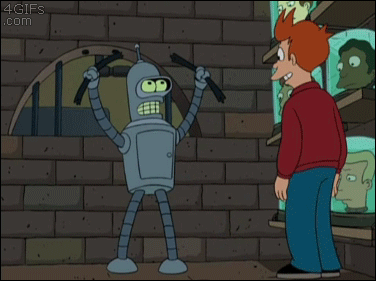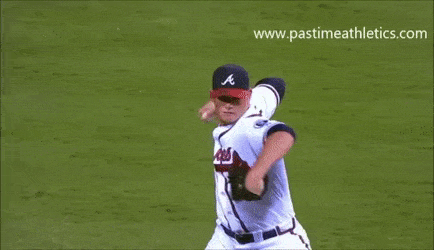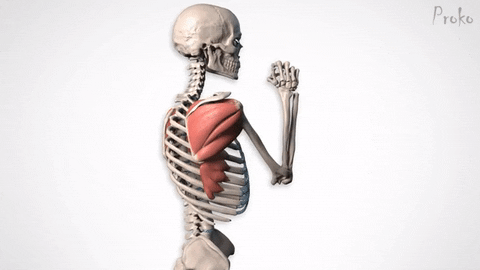Well, what BETTER way to spend quarantine than to learn more about the rotator cuff and the serratus anterior? At this point I feel like your remaining options are: clean your toilet, surf Netflix with agitation, or hang out with your family and this is definitely better than all three of those.

I'm sure you've been religiously studying the shoulder with me through parts one, two, and three, so you know we're ready for the completion of the shoulder anatomy enchilada. The rotator cuff and the serratus anterior are like the refried beans of this analogy: you don't realize how much you love them until they're missing from the plate.
(Don't forget! After all this anatomy and physiology I'll do a summary write up with exercises, potential problems to look out for, and final thoughts on how to train the shoulders into the glorious torso tassels that they are.)
You've certainly heard more about the rotator cuff in pop culture than any other body part. A mythical beacon of injury, the rotator cuff sounds like some cartilaginous belt encircling the joint to keep the arm strapped in. Before I became a trainer, I always pictured something that looked like ribbon candy wrapped around the upper arm. How I thought this would hold an arm in place is unclear, but I suspect it has to do with the fact that I have about four brain cells and they were probably busy that day. I also used to think that chemotherapy was doctors using a radar gun like Marvin the Martian's to fire poison at their terrified patients. I've learned a lot.

So hey! The rotator cuff! It's not a belt nor does it look like ribbon candy! It's four small muscles! I was shocked by this! When people tell me they hurt their rotator cuff, I always say, "Cool, do you know which muscle?" and then they look at me as if I've just flashed them some nip. Sheer terror. So I know that most people don't understand the cuff either.
It's a word problem. "Rotator cuff" conjures the wrong image. It could be called "Rotator muscles," "Shoulder stabilizers," or "Horizontal strappy thingies," and it would be more accurate.
The rotator cuff is just muscles that stretch horizontally from your shoulder blade (three in the back, one in the front) to your arm bone. These four muscles give your arms life, primarily by ensuring that your arm bones don't fall out of their sockets when you move them.

In the most recent installment of this shoulder series, I accused the deltoids of puffy self-importance. Your delts get all the Boulder Shoulder credit, meanwhile the little guys underneath are pulling some serious weight. Your deltoid is a selfish wanker in general. It only wants to do one thing: GO UP. If it could, it would pull your arm bone up and out of the building, like the great glass elevator. Your rotator cuff muscles help parent the single-minded delts, capping some of their upward energy with some downward energy.
In a healthy shoulder, the cuff muscles work hard. As you'll see in a few paragraphs, you have every reason not to ask your cuffs to do more than they already have to. But let's learn who they are first. (All anatomy photos courtesy of my beloved app, Essential Anatomy 3.)
THE ROTATOR CUFF, AS FAMOUS MUSICIANS.
The Supraspinatus:
(view is the back of someone's shoulder)

The supraspinatus is your northernmost cuff muscle, which runs across the very top of the shoulder blade and underneath the big bony section you can feel with your fingers at the point of the shoulder. Supraspinatus lifts your arm straight out to the side. Because it threads beneath the acromion AKA the nub of bone where things get smashed, it often gets smashed. (The image above shows exactly how it slips underneath the bone to attach on the outside of the arm bone.) This is the most common rotator cuff problem spot. Supraspinatus is neither the biggest nor the most powerful cuff muscle, but it seems to get all the attention anyway. This is why I prefer to call it the Justin Timberlakeinatus.
(I will die on the JC Chasez hill.)
(Come on. Justin was the best N'Sync member?)
(Come on. JC was just singing his heart out while Justin was ripping off Janet's boob cover and letting her take the fall for it. Never forget how, among many other penalities, she was banned from the Grammys that year while Justin both attended and performed at them.)
The Infraspinatus:

The infraspinatus, as its name suggests, sits right underneath the supraspinatus. The infraspinatus is an external rotator, like when you reach back to put your jacket on. That is, it's supposed to only be an external rotator. But when the supraspinatus is injured (and I already told you that Timberlake can be a little bitch), the work of lifting the arm often falls to the infraspinatus in addition to its other duties. Sadly, it can only partially contribute to upward movements and is itself already vulnerable to injury. So the infraspinatus is very clearly the old Taylor Swift. Always trying to be perfect, always trying to do and say the right thing, too fragile to handle it when shit blows up. Get your training back on point and the old Taylor Swift won't be able to come to the phone anymore.
The Teres Minor (not to be confused with the Teres Major):

Teres minor is the smallest of the cuff muscles, and also an external rotator. It runs underneath the infraspinatus to create the bottom of the cuff. This turns out to assign an Axl Rose level of importance to the quality of the entire group. You think Guns 'N Roses ever becomes famous without that wail? No. Same with teres minor. Having that small but mighty pull from the ass of the shoulder socket helps to battle against the big guns that aggressively pull the arm bone forward. And—bonus!—it gets injured less often than the others. Teres Minor truly is the ooooooooh sweet child of your rotator cuff.
The Subscapularis:
(view is the front of someone's shoulder)

Subscap is the lone wolf of the rotator cuff, the only one thats on the front side of the scapula rather than in the back. It's an internal rotator and the strongest muscle of the four. Subscap generally minds its business unless you happen to be interested in throwing things really hard, in which case you can grind it (and the biceps tendon right next to it) to smithereens against the coracoid process AKA the other nub of scapular bone where things can get smashed.
Subscap is like Pink, as compared to all the other pop princesses of her era. Puts out great stuff but never quite fit in with the other girls. Tired of being compared to that damn Britney Spears. Doesn't need that world to validate her. She puts her head down and does her work, just like subscap. But don't piss her off either, just like subscap. She'll fight you.
Don't ignore pain. It'll fight you.
And speaking of being pissed off. When rotator cuff problems get ignored in the beginning, it's easy for them to amplify non-linearly into something real painful that lasts a real long time. They can't shoulder (lol) each other's load forever. Your compromised rotator cuff complex becomes Jason Everman, and the really important thing to remember about Jason Everman is that no one wants Jason Everman to be part of the band. (He got kicked out of both Nirvana and Soundgarden shortly before each band became globally famous.) Remember, kids. Getting rid of the problem early will lead to far greater success down the road. DON'T IGNORE PAIN.
So why is the rotator cuff so vulnerable to injury when it's got all these giant muscles (pecs, traps, lats, delts) around it to do the work?
REASONS THE ROTATOR CUFF GETS HURT.
1) The giant muscles around it are not, in fact, doing the work.
Almost always this falls to the muscles that help pull the arm downwards in the socket: lower traps, lats, teres major (a lat wannabe, albeit an important wannabe like Gretchen Weiners). We are so used to working in the pushing forward and pushing upward ranges, that it's easy to neglect the pulling downward and pulling backward to complete the movement diamond.
Without sufficient training of the bigger muscles that pull in and down, your shoulder starts to depend on the rotator cuff muscles to do more work than they're built for. Like all the other joints, the muscles of the shoulder are divided into primary movers and primary stabilizers. The giant ones move. The little ones stabilize. (This is simplified but is generally true.)
When things get dysfunctional, you'll start seeing the little muscles (rotator cuff) trying super hard to help with big movement, and giant muscles trying to add stability (helloooooooo, painful upper traps).
Like all of us, the cuff muscles get pissed off when being constantly overloaded with work. Eventually they go full Office Space and decide they're just not gonna do anything anymore. An exhausted and abused rotator cuff can't properly maintain arm bone alignment. Which brings us to vulnerability reason number two.
Your rotator cuff caps the upward muscle energy with some downward muscle energy.
2) The rotator cuff is either generally weak, or has learned how to be weak via the abuse described in #1.
I may have mentioned this three thousand times, but the goal of the rotators is to pull the arm bone in and down within the socket. If they can't or won't do it, the arm bone tends to ride high in the socket, thanks to the powerful delts and traps. We've talked about how little space there is up at the place where your shoulder blade meets the humerus:
A strong upper back helps maintain the scapular position. One important component of that specific scapular angle is that it preserves juuuuuuuuust enough space for a bunch of tissues to squeak through. In between the top of the humerus head and the bottom of the acromion is only about one centimeter of space. One centimeter! It holds the supraspinatus; the supraspinatus tendon; a bursa which is a little puff of tissue that prevents the muscle from dragging along bone; one of your biceps tendons; AND the upper part of your shoulder capsule ligaments. That one centimeter packs a punch. (Way more than I can say about my ex-boyfriend.)
If the arm bone is ridin' dirty in that socket, it jeopardizes what tiny amount of space exists and crushes it into something that turns into impingement or AC joint death real fast.
Aren't you tired of covering for your vacationing coworkers? So is your rotator cuff.
3) The muscles have to slow down your arm very quickly before you rip it out of the socket yourself.
This is most common to athletes who throw overhead a lot (especially pitchers). I'm mostly here in this section to tell you that baseball pitching is AMAZING.
If a pitcher's arm while pitching 100mph were allowed to continue in the circle at that same speed, it would spin TWENTY-FOUR TIMES in the next second. You want to know what prevents the arm from doing that? Among other structures, it's your good ol' rotator cuff. It provides the eccentric brakes needed to halt the movement quickly, before your arm flies off into another dimension. Now imagine how many times a pitcher needs to call on this braking per practice, per game, per season, per lifetime. It's no surprise that they manage to do all kinds of damage to these little muscle musicians over time.

Of course, it's not just professional baseball players whose arms do this. They're just doing it at terrifyingly high speed. Your cuff is regularly slowing down forces too, whether you're playing company softball or catch with your kids. If the muscles are weak, however, they won't be able to pull back with as much energy as they might need. This will, once again, allow the arm bone to slam upwards or forwards in the socket, grinding labrums and bursa like woah. Like a sixth grade dance, we desperately want to prevent the grinding from happening.
4) Straight up trauma
Yep, you can rip your rotator tendons right off the bone, especially when you dislocate your shoulder, since it's gonna yank real hard on those tendons. This solution and recovery will be different for everyone, depending on if/when they have surgery, the surgeon's options, etc. For what it's worth, I always believe that everything can be improved, no matter how long ago your injury was. If you're in a rotator cuff no-fly zone right now, your best bet is going to be to find a physical therapist in real life who can start you on the right track. Blogs are not for you. After PT, go see an experienced personal trainer in real life. Then you can come back to my blog and learn how to go the rest of the way towards healthy shoulders.
HOORAY!
We've made it to the last part of our shoulder anatomy and physiology 101:
The serratus anterior.
I'm so excited to use this gif again.

SA is a real weird muscle. It doesn't even look like it would be able to pull anything because it doesn't look like it has a lever arm. But it does! It pulls in an extremely important way!
Remember that I drew you a lovely picture of the directions the muscles pull on the shoulder blade. I showed you three of the compass points, and SA is the fourth compass point we hadn't talked about yet. In this picture, the arrow would be pointing straight away from the viewer, into the screen.

The serratus anterior is responsible for pulling the shoulder blade forward and rotating it upward. It attaches from the inside edge of your shoulder blade (meaning the part closest to your vertebrae) onto your ribs, so that it can lovingly coax your scapula past the rib cage and underneath your uplifted swan arm. It can easily be seen in super lean jacked people, like Batman:

What a con. Like, dudes make fun of Spanx all the time and then they're like BATMAN'S SUIT IS BOMB SO TOUGH WOW. No. Batman is squishy like all the rest of us and straight up cheats by putting on a rubber muscle suit and calling it heroic. Anyway, his suit has a very nice serratus anterior so props to the anatomist who designed it.
So who needs the SA anyway? You do, if you don't want to thoroughly granulate the soft tissues in your shoulder.
Pulling the shoulder blade forward might seem like a weird movement to emphasize but here's why it matters. Any time you're lifting your arm above 90°—in any direction—your shoulder blade has to rotate to allow that to fully happen. If your shoulder blade were pinned, or if it didn't exist at all, you'd never be able to lift your arm higher than horizontal. Your arm bone can only get so far on its own, and then it needs the scapula to both allow the movement and support it from underneath. The serratus anterior makes it all happen. The tilting of the shoulder blade provides a sexy little platform for your sexy little humerus to nestle on top of.

One last bonus: A strong, healthy serratus anterior also helps hug your shoulder blade snugly alongside your ribcage, no matter what movement you're doing. This hug can change your life, as the right hug is wont to do.
Let me say this again here: This is why you have to care about what your bones are doing. The reason muscles freak the fuck out is because they're trying to cover for a joint being on vacation. Don't you freak out when too many of your coworkers go on vacation? Aren't you tired of doing it for them? EXACTLY.
If you do not have full range of motion in a joint, your muscles have to do magic to make the same movement happen. It's magic, but it's black magic. Don't support it! Fix your mobility! Ten million reps of external rotation will not help if you aren't making efforts towards better spinal and shoulder joint health underneath the muscles.
The body is limitless.
We did it! Four blogs full of shoulder mechanics, anatomy, and kinesiology. It's a lot of reading. Hopefully now when you start training or rehabbing your upper body, you have an entirely different perspective of your torso tassels.
Fun final fact: there are all kinds of neat surgeries being done now to bring damaged shoulders back into a functional state, including taking a chest muscle and shifting it over to act as a front deltoid, or subbing in lats and teres majors when the subscapularis is wrecked. The incredible thing about these surgeries is that muscles and nerves, which are biologically taught from birth to fire one way and one way only, are able to quickly learn how to do another task anyway. A friend of mine with bladder cancer received a pig's bladder transplant. Not even human tissue, yet her nervous system adopted the pig's bladder as her own and she has normal sensation in it. That's wild. This is what I mean when I say that I always believe things can be improved. The body is limitless. So if you've struggled with shoulder problems for years, don't let yourself fall into the mindset that you'll forever be plagued with shoulder problems. You might just need to teach it some new tasks.
Next blog will be all practicalities:
*Favorite shoulder-related exercises.
*Common movement problems to look out for.
*Accessory work that you're probably skipping.
*Basic shoulder mobility.
LFG.





